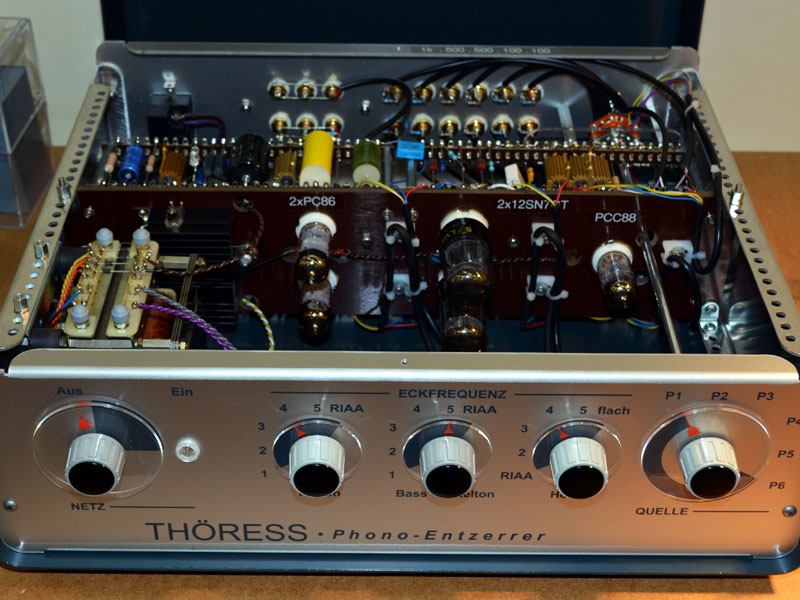

The 'Q' refers to the "width" of the EQ that you are going to apply a small 'Q' value (referred to as an 'open Q' will affect a large range of frequency around your selected frequency where as a higher 'Q' value (referred to as a 'tight Q' will affect a much smaller area of the frequency range. Parametric EQ's are fairly similar to Sweepable EQ's in the respect that they have an Amount Knob and a Frequency Knob, but they will also have a 'Q' knob. Again, they will usually have 2 fixed EQ's at 80Hz and 12Khz, but will then have 1, 2 ,3 or even 4 (on really big consoles!) Parametric EQ's. Parametric EQ's are the daddy when it comes to EQ! These are found on the more expensive consoles and allow for precise EQ'ing of signals. This image shows the typical layout of a swept mid EQ on a mixing desk - note the two fixed Hi and Low EQ's and the 2 knobs in the middle - the upper one controls the gain and the lower (yellow) one selects the frequency.

Sweepable EQ's will have 2 knobs - one to set the amount of gain you wish to apply and another to select the frequency you wish to effect.
They still have their Low and High frequencies Fixed (usually at 80Hz and 12KHz) - but have one or two EQ's which are sweepable - meaning that you can select the frequency at which the EQ's operate (on my MX3282a you can sweep from 100Hz to 8KHz) - these are obviously a bit more precise than Fixed EQ as you can choose the frequency you wish to focus around. This image shows the typical layout of a fixed EQ on a mixing desk - not this arrangment has 3 bands, Hi, Mid and Low, to cut or boost these frequencies, you simply turn the knob left or right respectivley.Īn EQ with sweepable mids is the next logical step up from a fixed EQ and are found on medium priced desks. Fixed EQ's will only have one knob which sets the desired amount of Gain at the frequency labeled on it. Fixed EQ's will be set to certain frequencies (on my Behringer MX3282a, the 4 stereo channels have Fixed EQ's set at 80Hz, 500Hz, 3KHz and 12KHz) - you can not change the frequencies at which Fixed EQ's operate. EQ units will nearly always be built into mixing desks / multi-trackers, regardless of the size and are considered to be the "paint-brushes" of the mixing world.įixed EQ's are about as basic as you get - you'll often find these on cheaper / smaller mixers and they're designed to tidy up the sound rather than make delicate adjustments (think of fixed EQ's like a big old paint-brush). When it comes to outboard EQ, there are 4 main types - The first three (Fixed, Sweepable Mid and Parametric) are logical progressions from one to the next where as a Graphical EQ unit serves a different function entirely. A description and guide to the 4 main types of EQ: Fixed, Sweepable Mid, Parametric and Graphic.


 0 kommentar(er)
0 kommentar(er)
